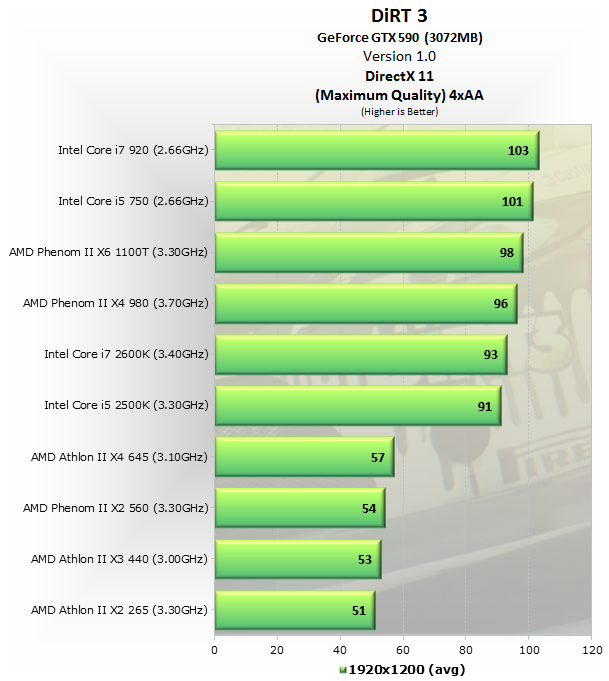Legit Reviews tested this theory. 16x/4x (Asus P8P67) vs. 8x/8x (Asus P8P67 Deluxe) CF with 6970s produced
nearly identical results at 1080P. The 4x PCIe 2.0 slot gets 2x more bandwidth off the P67 chipset than was the case with P55 generation. So the 4x PCIe 2.0 slot is equivalent to a single PCIe 1.0 8x. That WS Revolution runs at 8x/8x/16x. 4x PCIe 2.0 only has a
5% penalty with a GTX480 at 1080P as found by TechPowerup.
How do you account for the
huge performance differences then in Crysis, BF:BC2, F1 2010? Keep in mind that's coming from an i7 @ 3.6ghz which is another 20-25% faster than a Q6600 @ 3.6ghz.
If you aren't getting maximum performance due to a CPU limitation, then why even get a 580 SLI / 6990 CF system? You'd be better off with a 570 SLI or an HD6950 CF is my point.
*With your logic, you should just always buy the fastest GPU sub-system you can afford then since "practically" CPU performance doesn't matter you say. You are probably arriving at this conclusion from testing at 2560x1600 4AA/8AA. You know that's 2x the load compared to a 1080P setup.
That would be like me comparing gaming on a 960x540 screen to 1920x1080.
Look, at 1680x1050, an i3-2300 is
much faster than a Phenom II X4 955 in games. 1080P isn't that far off from that resolution.
And like I said in my real world testing, Q6600 @ 3.4ghz was already too slow. Look at Far Cry 2, Civ5, Starcraft 2, GTAIV, Resident Evil 5. In all of those games, it's going to be slaughtered by an i5/i7, esp. SB.
If CPU speed didn't matter, why does Intel have > 80% market share? You think most people sit there and count SuperPi times with a stopwatch?
Look, I realize that if you are getting 60 fps+, then getting 180 fps+ may not be that advantageous from a practical standpoint. But then you are perfectly fine with a GTX560 Ti over an HD6990 CF.
But if you were to simply add that HD6990 CF setup to a Q6600 CPU, guess what, you may only go from 60 to 80+ fps and that's it.









